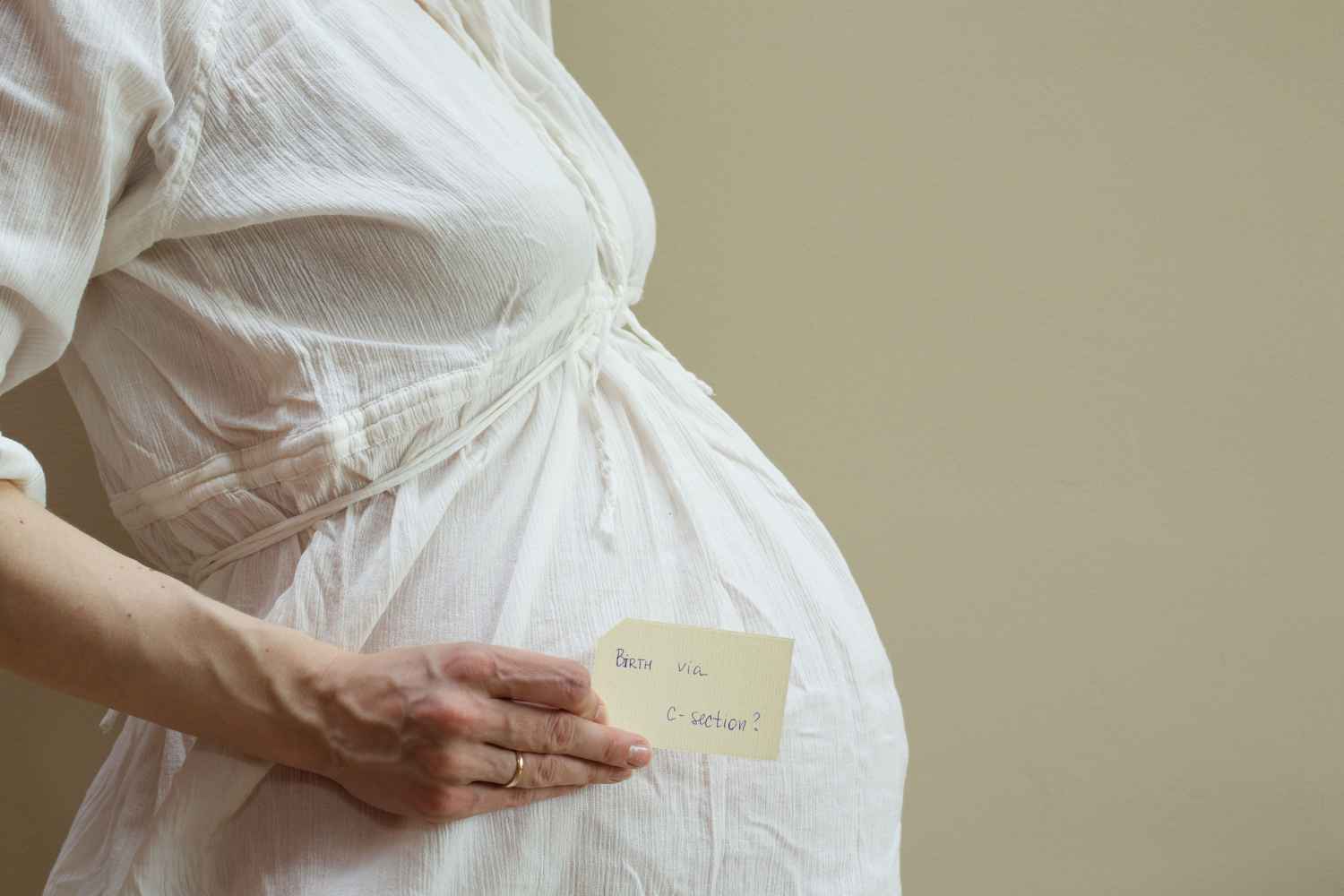
Baby Crowning – Everything You Need To Know
4 min readWritten by Editorial Team


Birthing a child is one of the excruciatingly painful yet the most beautiful process nature has blessed us with. Few weeks before the due date itself, a woman’s body begins to prepare itself for this childbirth process. Just as the pregnancy undergoes three trimesters, the childbirth process also undergoes phases starting from contractions, pushing and the crowning of the baby during delivery. Crowning of the baby is termed as birth crowning and vaginal crowning. In this article, you can expect to learn more about the crowning of the baby and what you can expect to face at this stage of delivery.
What Is Baby Crowning?
With each and every contraction that you face during delivery, the baby’s head begins to show up through the birth canal. Contractions are nothing but the uterus muscles tightening and relaxing to ease the baby into passing through the vaginal opening or birth canal. When you push, the baby’s head will begin to appear but as soon as the contraction stops, the baby’s head will withdraw into the canal again. When the baby’s head is visible in the opening without withdrawing back into the canal again is called as birth crowning. Before the crowning occurs, the cervix will be dilated by 10 centimeters with 100% effacement. Once crowning takes place, you can guesstimate you will deliver your baby soon enough.
How Does It Feel When Your Baby Is Crowning?
You must have heard of the phrase “the ring of fire”. This describes the baby crowning. That is because, when the baby’s head begins to crown, you will be feeling a burning or stinging sensation in the opening. This happens because the baby’s head stretches the tissues in the vagina for some time before it goes back in. When you experience the burning sensation, you will need to stop pushing immediately. By doing this, the risk of vaginal tearing will reduce. If you no longer feel the burning sensation, then it means that you are past the primary stage of labor. This burning sensation occurs only for a very brief period which may make you feel numb. This is almost like a natural anesthetic but the duration of this numb feeling cannot really be predicted.
How To Relieve The Baby Crowning Pain?
Using a warm compress on the perineum will help to bring down the Crowning pain. Likewise, massaging the perineum with warm oil will make it stretchy and soft. This will help to reduce the discomfort of crowning.
Tips To Fight The Urge To Push
You should stop pushing as soon as you feel the ring of fire. This will help to prevent your tissues from getting damaged. Therefore, it is important to fight the urge to push during this time. Although technically you should wait for your doctor to signal to you when to fight the urge the push, there are some simple tips that you can try and keep in mind during labor;
- Lean on your back and try to relax the perineal muscles in between your vagina and your rectum.
- Request your nurse or midwife to massage your body so that your body can relax.
- Practice some deep breathing exercises that will take your mind off the urge to push.
- Allow the contractions to run its course without fighting them off during labor.
Preparing For Childbirth
You can begin to prepare for birth crowning to occur naturally even before the actual process. During the crowning process, you may experience a burning sensation in your perineum, massaging the area might reduce the risk of tearing of vagina. But in some cases, the doctor suggests you undergo an episiotomy which is a minor surgical incision in your perineum to ease the labor process by allowing more room for the baby to pass through. The perineum is nothing but the skin in between the vagina and rectum. Usually, from the 35th week of pregnancy, your doctor may suggest inserting a lubricated finger into your vagina for about 10 minutes to stretch it in preparation of childbirth.
How You Can Prevent Tears?
Tearing of the perineum and the consequent stitching up of it can be a painful thing, and hence here are some tips you can follow to prevent the tearing;
- Exercising regularly and having a balanced and healthy diet will help keep your tissues healthy and withstand the pressure.
- Lubrication of the area with oil during labor will help the baby come out easily without any exertion on your muscles and tissues.
- Lying on your side while pushing the baby out can lessen the pressure and avoid tearing.
- Do not push violently, instead do so very slowly yet firmly and leave out long deep breaths during pushing.
After Birth Crowning
Once the crowning of the baby’s head occurs, it is followed by the emerging of the baby’s body out into the world. Your doctor will hold the baby’s head once it is out to avoid entry of the blood or amniotic fluid into the baby’s lungs. Any excess fluids that may be present in your baby’s mouth and nose will also be suctioned out through a small bulb syringe. Following this, the baby will be made to lie on your stomach in order to cut the umbilical cord. The final stage of your delivery is the removal of the placenta from the uterus.
Duration Of Crowning
In case of a first pregnancy, the crowning of the baby may take a couple of hours, but for second and subsequent pregnancies, the duration of crowning will be much shorter.
Discuss with your doctor in your final weeks of pregnancy about what to expect when you are in labor and in the delivery room as this will help you to prepare yourself mentally for the entire process. Yes, crowning is a critical part of the pushing phase and is very painful. After all, it is an indication that your bundle of joy is on its way out. And trust us; even if it is painful, the pain is quite manageable. There are numerous remedies to reduce the pain of crowning. And above all, your body has its own method to handle the pain.

Editorial Team,
With a rich experience in pregnancy and parenting, our team of experts create insightful, well-curated, and easy-to-read content for our to-be-parents and parents at all stages of parenting.Read more.
Responses (0)
Want curated content sharply tailored for your exact stage of parenting?
Related articles

IBS During Pregnancy – Causes, Symptoms and Treatment

Mayonnaise For Babies – Is it Safe to Give and Top Health Benefits

Planned C-Section – Everything You Need To Know

Excessive Yawning During Pregnancy – Causes And Treatment Options

Vertigo During Pregnancy – Causes, Tips, and Treatment Options

Top 300 Popular Baby Names That Mean Noble With Meanings
Sponsored content
Discover great local businesses around you for your kids.
Get regular updates, great recommendations and other right stuff at the right time.





